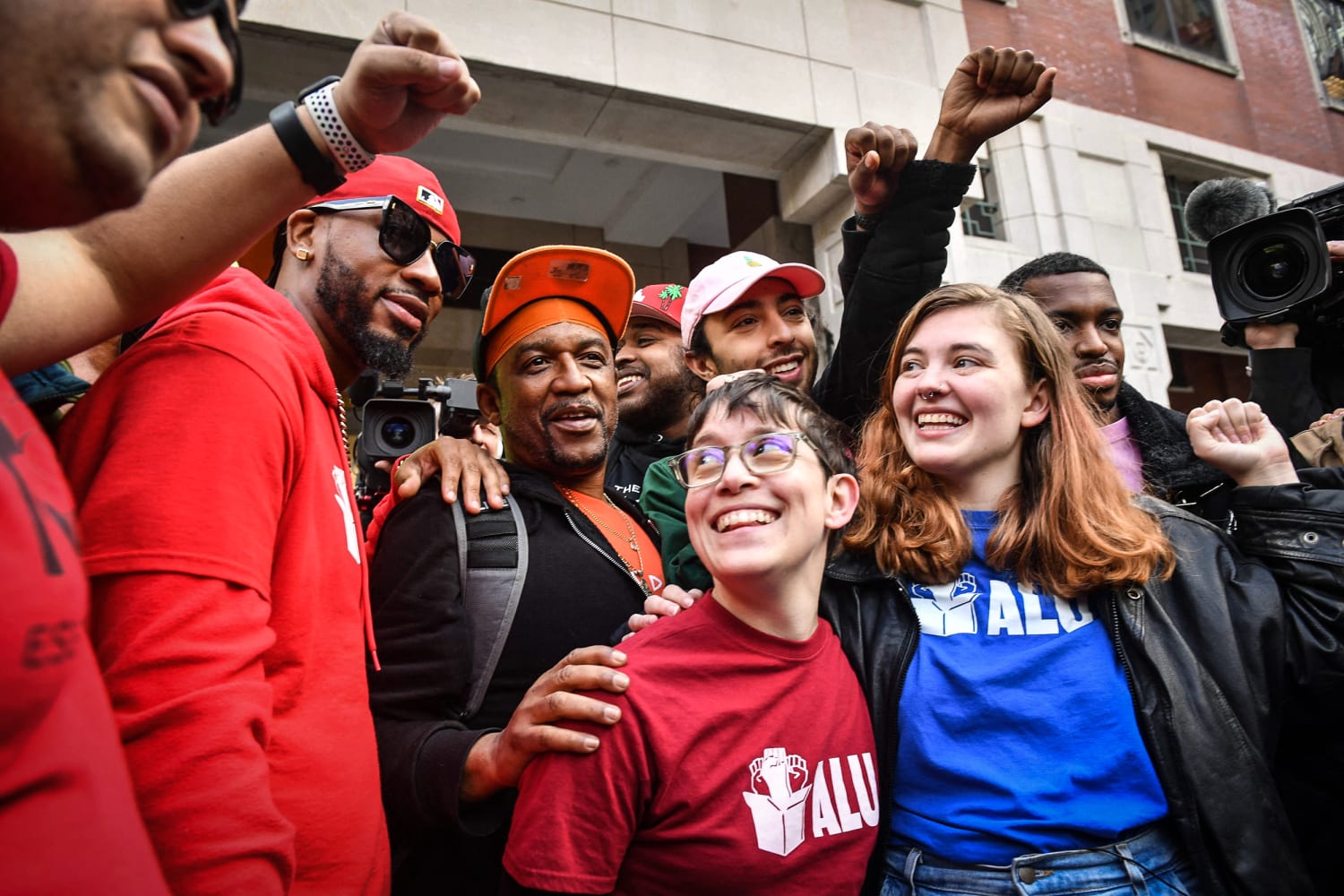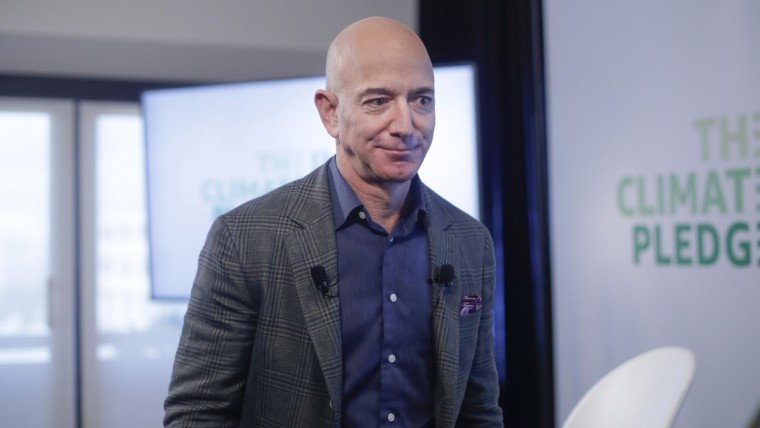When the news broke that the upstart Amazon Labor Union had made history by winning its union election at Amazon’s sprawling JFK8 fulfillment center, labor experts were as jubilant as they were puzzled. How had this group of Staten Island warehouse workers, who had decided to form their own independent organization instead of trying to join an established national union and ignored conventional wisdom about how a union drive “should” be run, gone toe-to-toe with one of the richest, most powerful, most anti-worker corporations in the world … and won?
Ultimately, it was far simpler than any heavy-handed analysis may make out: It all came down to the workers, and the real, genuine solidarity that the ALU’s organizing committee built among themselves and their roughly 8,000 co-workers. “What we did was allow anyone in the building who wanted to organize to organize,” Angelika Maldonado, chair of the ALU’s Workers Committee, told Jacobin Magazine. As she explained, the members of the committee devoted every waking hour to organizing, listening, strategizing, fundraising, phone banking out of Unite Here Local 100’s Manhattan office, squeezing one-on-one conversations into 15-minute increments during their break time, and breaking bread (and enjoying home-cooked soul food) with their co-workers in the parking lot outside the building.
The members of the committee devoted every waking hour to organizing, listening, strategizing, fundraising and phone banking.
The ALU filed for an election with the National Labor Relations Board in October, but initially had to withdraw the petition because of a lack of signatures; after that, they redoubled their efforts to get where they needed to be. They countered Amazon’s dirty tactics with militancy, disrupting captive audience meetings and making it very clear that they knew their rights. Christian Smalls, the new union’s president and one of its most effective organizers, also became its most visible spokesperson; he was a constant, vibrant presence at meetings and rallies. He was all over social media and, at one point, was arrested for trespassing (alongside two other workers) while delivering food to workers in the facility’s break room. Smalls has earned his reputation for fearlessness, and the fight to unionize became his personal crusade.
When he was fired from JFK8 in 2020, after leading a walkout to protest a lack of Covid-19 safety measures at the facility, company executives smeared him and denigrated his character and abilities. In a leaked memo, Amazon General Counsel David Zapolsky referred to Smalls as being “not smart, or articulate”; later, according to a complaint filed by the National Labor Relations Board, the company referred to ALU organizers as “thugs,” continuing its racist dismissal of both a movement built by workers of color and the Black man leading it.
Later, after their victory had been secured and Amazon’s devastating miscalculations were laid bare, Smalls tweeted, “@amazon wanted to make me the face of the whole unionizing efforts against them…. welp there you go! @JeffBezos @DavidZapolsky…” One can only imagine how good that felt for him — and for every other worker on the organizing committee and in the greater union.
Christian Smalls, the new union’s president and one of its most effective organizers, also became its most visible spokesperson; he was a constant, vibrant presence at meetings and rallies.
In considering Smalls’ accomplishments as a leader, one is reminded of another charismatic, working-class Black labor leader, who harnessed the power of solidarity to build enduring worker power on the Philadelphia waterfront. Ben Fletcher, born 132 years ago this month in a vibrant multiracial neighborhood in South Philadelphia, was a dockworker and devoted organizer for the Industrial Workers of the World (IWW), nicknamed the Wobblies.
In the 1910s, Fletcher co-founded the Local 8 branch of the IWW’s Marine Transport Workers Industrial Union, which ruled the docks for a decade and was an explicitly anti-racist, integrated union during an era where that was almost unheard of within organized labor, let alone the U.S. in general. He traveled up and down the East Coast, agitating workers and preaching the message of working-class unity, earning the respect of his peers and drawing the ire of the U.S. government, who imprisoned him and hundreds of other Wobblies for treason during World War I. He now stands as one of labor’s forgotten radical heroes, but his legacy lives on in organizers like Smalls and his comrades in the ALU.
What drew Fletcher to the IWW was its status as a firmly anti-capitalist industrial labor union that welcomed workers of all races and genders and pioneered the concept of solidarity unionism. The difference between solidarity unionism and its counterpart, business unionism, is hierarchical as well as political and strategic. While proponents of the latter seek to run their unions like, well, a business, in a top-down fashion that relies heavily on paid staff and political machinations to achieve its largely economic goals while leaving member involvement as an afterthought, solidarity unionists eschew entrenched hierarchies and level the playing field between the organizers and the organized.
While many major American labor unions can rightly be accused of exemplifying the business union model, the IWW employs a worker-first strategy, through which its member-organizers seek to build unions “based on the direct strength of workers on the job, without regard to government or employer recognition” and typically shun the NLRB-focused electoral process and contract bargaining that traditional trade unions consider essential.
The difference between solidarity unionism and its counterpart, business unionism, is hierarchical as well as political and strategic.
The Wobbly approach continues to bear fruit in multiple industries (most recently, fast food and retail victories in the Pacific Northwest) but solidarity unionism has become bigger than one union. There are countless examples throughout history of workers taking it upon themselves to organize for change, with or without the support of a formal union structure; many of these efforts have been undertaken explicitly by and for people of color, especially Black workers, who for decades were shut out of majority-white labor unions or shunted off into segregated union locals.
As I write in my book, “Fight Like Hell: The Untold History of American Labor,” the washerwomen of Jackson, Mississippi, founded the state’s first labor organization in 1866 — just one year after Emancipation — to demand higher prices for their labor. There was Dorothy Lee Bolden and her National Domestic Workers Union of America, which saw her organize 10,000 Black women workers in Atlanta to win fair wages and professionalize household work. Now, Haymarket Pole Collective in Portland, Oregon, distributes resources, education and mutual aid to Black, Indigenous and trans sex workers. Workers who have been shut out of a flawed mainstream labor movement have always found a way to fight anyway — and in many cases, a way to win.
The Amazon Labor Union falls firmly into this camp, and this very well may have been the key to their resounding success. As an independent, egalitarian effort, led entirely by workers (and former workers, in Smalls’ case), the ALU did not need to swear allegiance to any particular rulebook or adhere to anyone else’s opinions on what their strategy should look like, instead cherry-picking relevant lessons from labor’s past to craft their own very modern campaign. They filed for an election with the NLRB and will hopefully be sitting down to begin bargaining their first contract soon (Smalls sent Amazon a letter requesting to meet during the first week of May), but the union itself was organized horizontally, bit by bit, worker to worker, building relationships at the break room table and in the parking lot.
“Here’s the basic thing: You have an actual worker-led project — a Black- and brown-led, multiracial, multinational, multigender, multiability organizing team,” Justine Medina, an ALU organizing committee member and co-chair of the New York Young Communist League, explained to Labor Notes. “This was a truly collective effort, led by some brilliant Amazon workers thrust into organizing by the pandemic and the conditions of their lives.”
A century after Ben Fletcher and the Wobblies brought solidarity unionism to the Philly waterfront, the Amazon Labor Union has rebuilt it anew in a Staten Island warehouse — and the example they set today will hopefully inspire a whole new generation of workers to follow their lead.
Source: | This article originally belongs to Nbcnews.com











